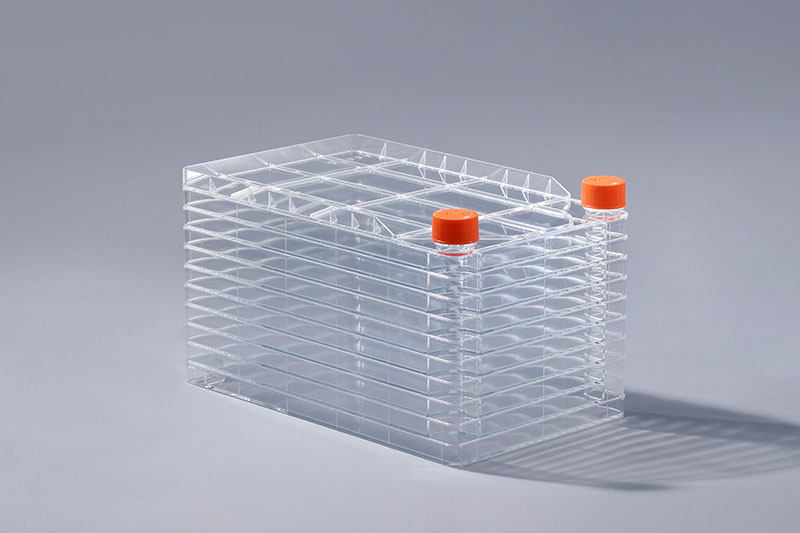The cell factory is mainly suitable for the large-scale culture of adherent cells. Generally, there are two types of caps: breathable caps and airtight caps, which can be used in different culture environments. There will be a waterproof and breathable membrane on the bottle cap, which plays an important role in the cell culture process.
The waterproof breathable membrane on the bottle cap of the cell factory is a new type of polymer waterproof material. From the production process, the technical requirements of the waterproof breathable membrane are much higher than that of ordinary waterproof materials; at the same time, from the quality point of view, the waterproof breathable membrane It also has functional characteristics that other waterproof materials do not have.
1. High temperature resistance - the working temperature is up to 250 ℃.
2. Low temperature resistance - good mechanical toughness; 5% elongation can be maintained even if the temperature drops to -196℃.
3. Corrosion resistance - for most chemicals and solvents, it is inert, resistant to strong acids and alkalis, water and various organic solvents.
4. Weather resistance - has the best aging life in plastics.
5. High lubrication - the lowest friction coefficient among solid materials.
6. Non-adhesion - is the smallest surface tension in solid materials, and does not adhere to any substance.
7. Non-toxic - with physiological inertia, as artificial blood vessels and organs for long-term implantation in the body without adverse reactions.
The breathable layer of the middle layer of the waterproof breathable membrane is a kind of microporous membrane, which is produced by high-tech principles. The pores are sized to allow water vapor to pass through, but not water molecules, so the product is waterproof and breathable. The liquid in the cell factory will not affect the microbial barrier performance and breathable effect of the breathable membrane after contact, ensuring a good growth state of cells.
The FAI climbed 5.9 percent year-on-year in the first 11 months of 2018, quickening from the 5.7-percent growth in Jan-Oct, the National Bureau of Statistics (NBS) said Friday in an online statement.
The key indicator of investment, dubbed a major growth driver, hit the bottom in August and has since started to rebound steadily.
In the face of emerging economic challenges home and abroad, China has stepped up efforts to stabilize investment, in particular rolling out measures to motivate private investors and channel funds into infrastructure.
Friday's data showed private investment, accounting for more than 60 percent of the total FAI, expanded by a brisk 8.7 percent.
NBS spokesperson Mao Shengyong said funds into weak economic links registered rapid increases as investment in environmental protection and agriculture jumped 42 percent and 12.5 percent respectively, much faster than the average.
In breakdown, investment in high-tech and equipment manufacturing remained vigorous with 16.1-percent and 11.6-percent increases respectively in the first 11 months. Infrastructure investment gained 3.7 percent, staying flat. Investment in property development rose 9.7 percent, also unchanged.
 English
English



















































